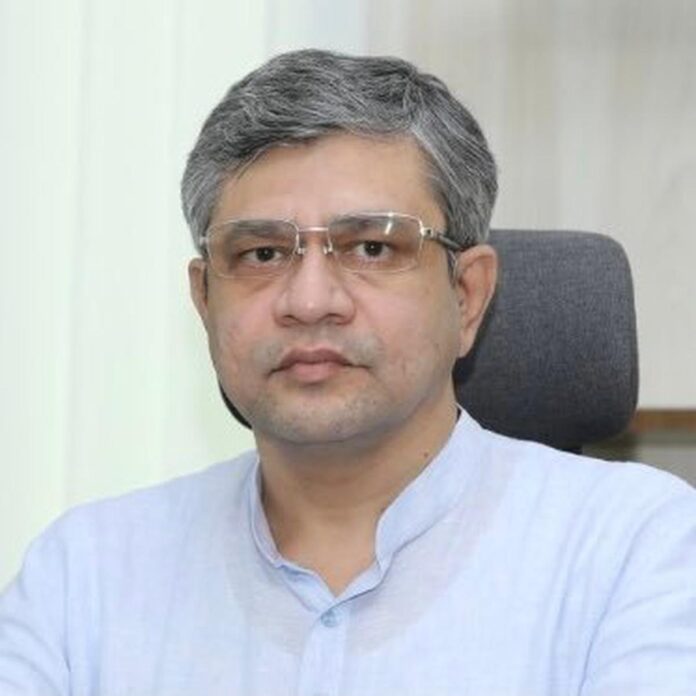On August 16, the Railway Board of India introduced new training guidelines to enhance the safety and operational efficiency of the country’s railway system, specifically for personnel working in the Automatic Block System. This system is used in India’s 17 railway zones and includes station masters, train managers (guards), pointsmen, and traffic inspectors. The move comes in response to the tragic Kanchanjunga Express accident and seeks to standardise training and address the gaps in staff knowledge regarding the Automatic Block System.
The need for improved training became starkly apparent after the June 17 accident in West Bengal’s Darjeeling district, where a goods train collided with the stationary Kanchanjunga Express. The collision resulted in the loss of 10 lives and brought to light significant shortcomings in the interpretation and application of the automatic signalling system that was implemented in January 2023. The subsequent investigation by the Commissioner of Railway Safety revealed that the misinterpretation of rules related to the Automatic Block System played a major role in causing the accident.
To understand the background, it is essential to know that the Indian Railways operates under two systems: the Automatic Block System and the Absolute Block System. The Automatic Block System allows multiple trains to travel in the same direction on a single track between two stations, regulated by signal aspects. This contrasts with the Absolute Block System, which only permits one train to operate between two stations at a time, preventing another train from entering the block until the first one has completely crossed to the next station.
A signal expert provided a clear explanation: “Imagine two stations, A and B, connected by a stretch of track known as a block section. In the Automatic Block System, signal aspects control the movement of multiple trains running one after the other between stations A and B on the same track. In contrast, the Absolute Block System allows only one train in the block section between A and B at a time. No other train can enter this section until the first train has exited.”
The newly issued training guidelines by the Railway Board aim to address the gaps highlighted by the Kanchanjunga Express tragedy and ensure that personnel are well-versed in the Automatic Block System. Two new types of training have been introduced: Periodical Training and Newly Commissioned Section Training, both of which are specifically designed for station masters and pointsmen.
Under the new rules, station masters and pointsmen will be required to undergo a one-day orientation on the Automatic Block System every six months. These sessions will be conducted by station supervisors or traffic inspectors. Moreover, when a new automatic signalling system is commissioned in a section, station masters will receive two days of training from the concerned sectional traffic inspectors and senior sectional engineers. The completion of this training will result in the issuance of a competency certificate, allowing the personnel to operate within the Automatic Block System.
Additionally, the guidelines mandate that newly trained personnel will undergo intensive counselling by sectional traffic inspectors every two months during their first year of operation within the Automatic Block System. After the initial year, this counselling will take place every six months. These measures also apply to employees transitioning from the Absolute Block System to the Automatic Block System.
Similar training modules have been introduced for train managers and pointsmen to ensure that all personnel are aligned in their understanding and execution of tasks within the Automatic Block System. Beyond just the training aspect, the Railway Board is working to unify operational norms and practices across all 17 railway zones in India. This standardisation of operational procedures is particularly important, as varying subsidiary rules across zones were found to contribute to confusion and misinterpretation, which may have played a role in the June 17 accident.
Indian Railway Minister Ashwini Vaishnaw emphasised the importance of harmonising these subsidiary rules across zones. He noted that the Commissioner of Railway Safety’s report on the Kanchanjunga Express accident had identified contradictory rules as a factor in the collision, underscoring the urgent need for clarity and uniformity across the railway network.
In a statement, the Railway Board reiterated its commitment to safety, noting that “the intensive counselling and periodic training aim to ensure that our staff are well-prepared to handle the nuances of the Automatic Block System, which will ultimately enhance safety and efficiency in train operations.”
The introduction of these new training protocols signals a proactive approach by the Indian Railways to address safety concerns and prevent future accidents. By focusing on the standardisation of training, clearer operational guidelines, and regular assessments, the Railway Board hopes to avoid incidents like the Kanchanjunga Express tragedy and foster a safer, more reliable railway network.
3 Railway Accidents In Two Months
In parallel with these efforts, there have been 3 incidents in past two months that emphasise the ongoing challenges faced by the Indian Railways. 24 hours after intoducing the new guidelines, 22 coaches of the Sabarmati Express derailed near Kanpur, Uttar Pradesh. On 11 October, at Kavaraipettai railway station, about 13 coaches of the Bagmati Express derailed and caught fire after hitting the rear of a goods train that was positioned on a loop route.
On Thursday, in Assam’s Lumding division, eight coaches of the Agartala-Lokmanya Tilak Terminus Express derailed at Dibalong station. Fortunately, as confirmed by Assam Chief Minister Himanta Biswa Sarma, there were no major casualties, and all passengers were reported safe. The derailment, occurring around 4 pm, serves as a reminder of the continued need for vigilance and ongoing improvements in railway safety and operations.
As the Indian Railways works to implement these new guidelines and training procedures, the goal is clear: to enhance safety, minimise accidents, and ensure that all staff operating in the Automatic Block System are fully trained and competent. These efforts will help restore confidence in the railway network and reduce the risk of tragic accidents like the one that claimed lives in Darjeeling.

